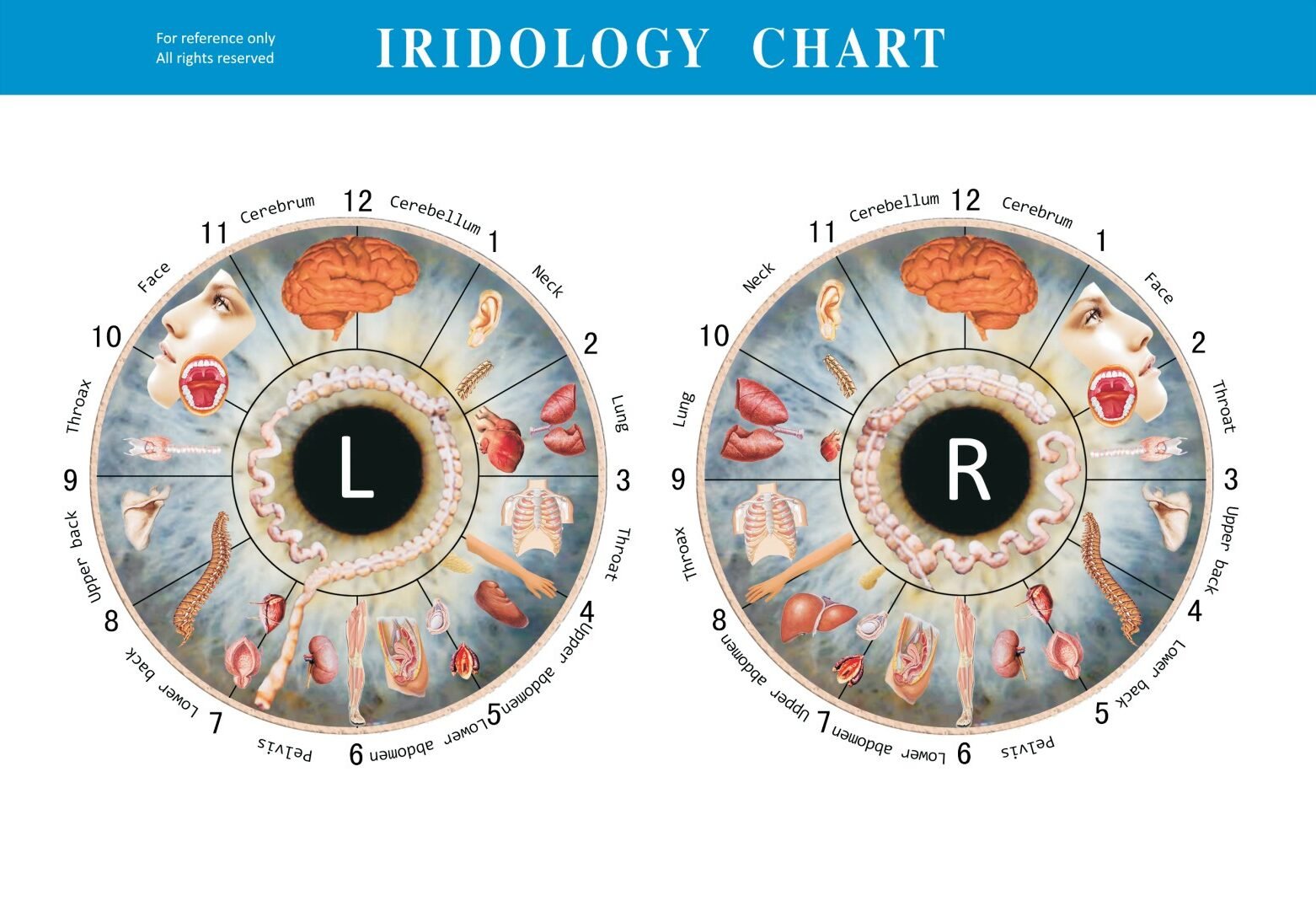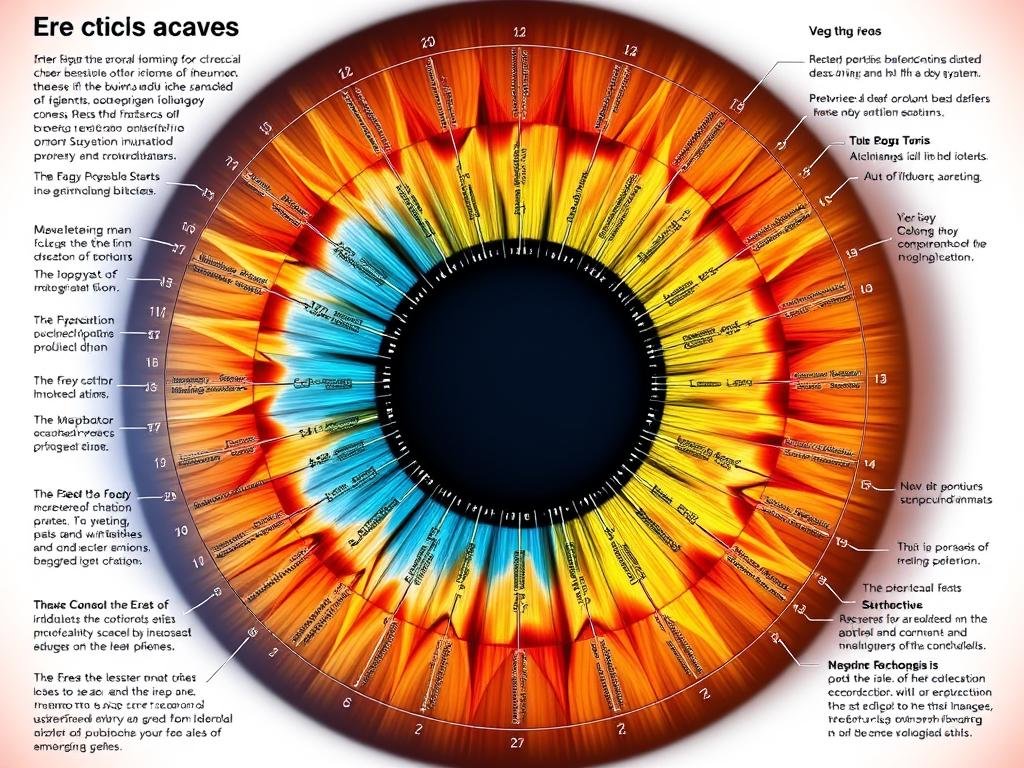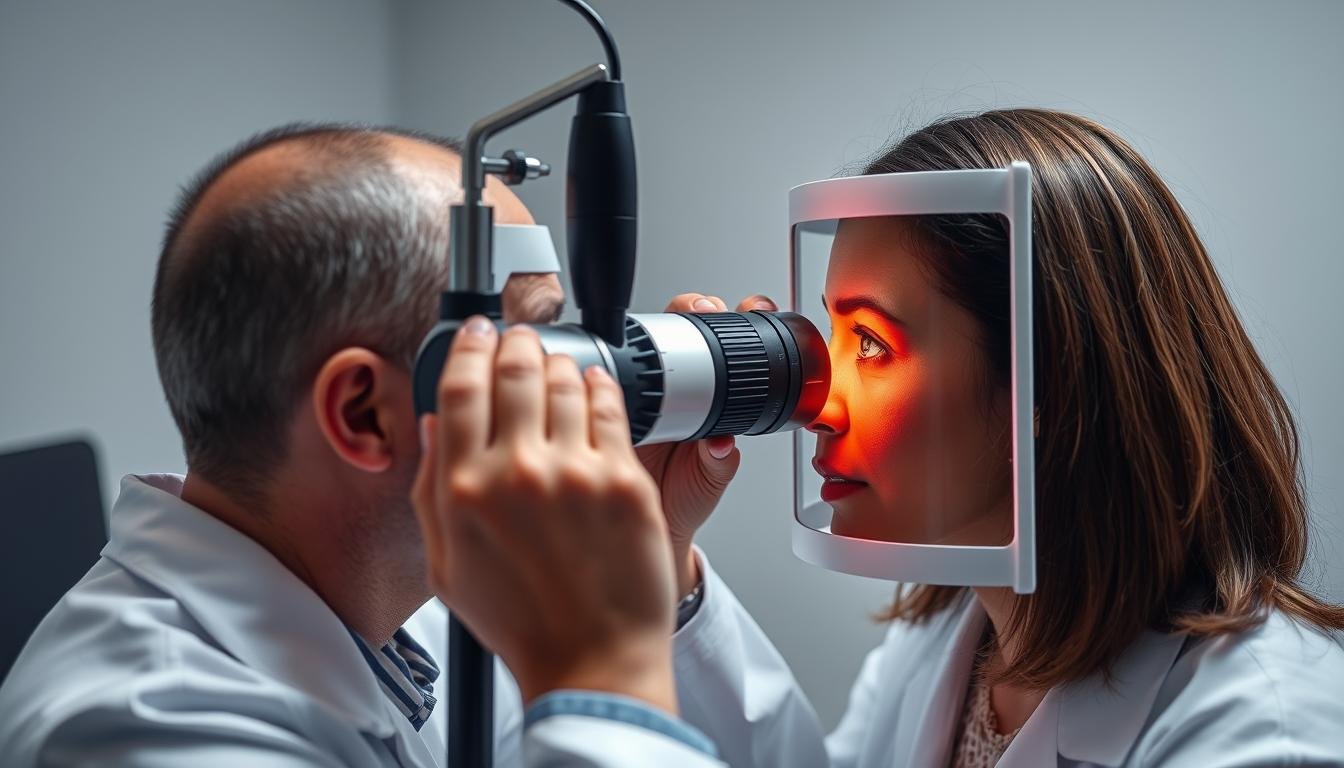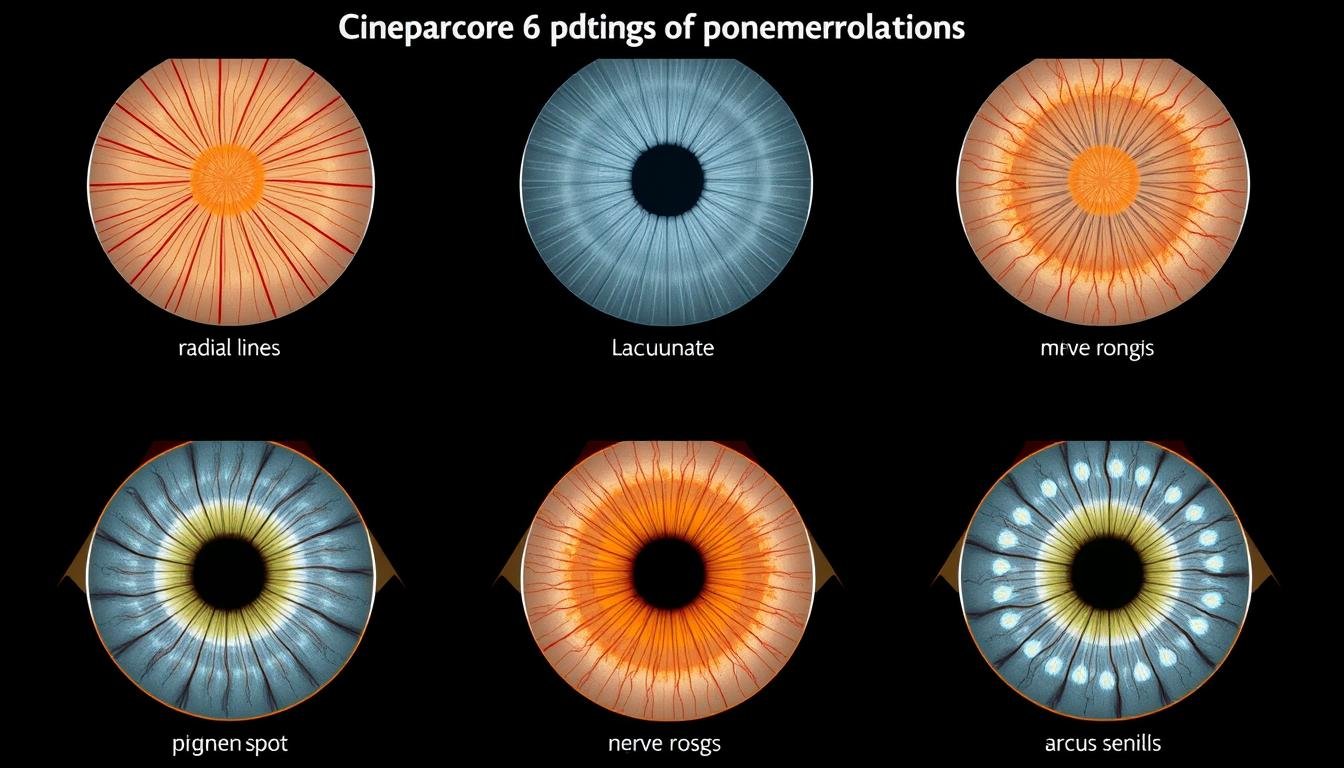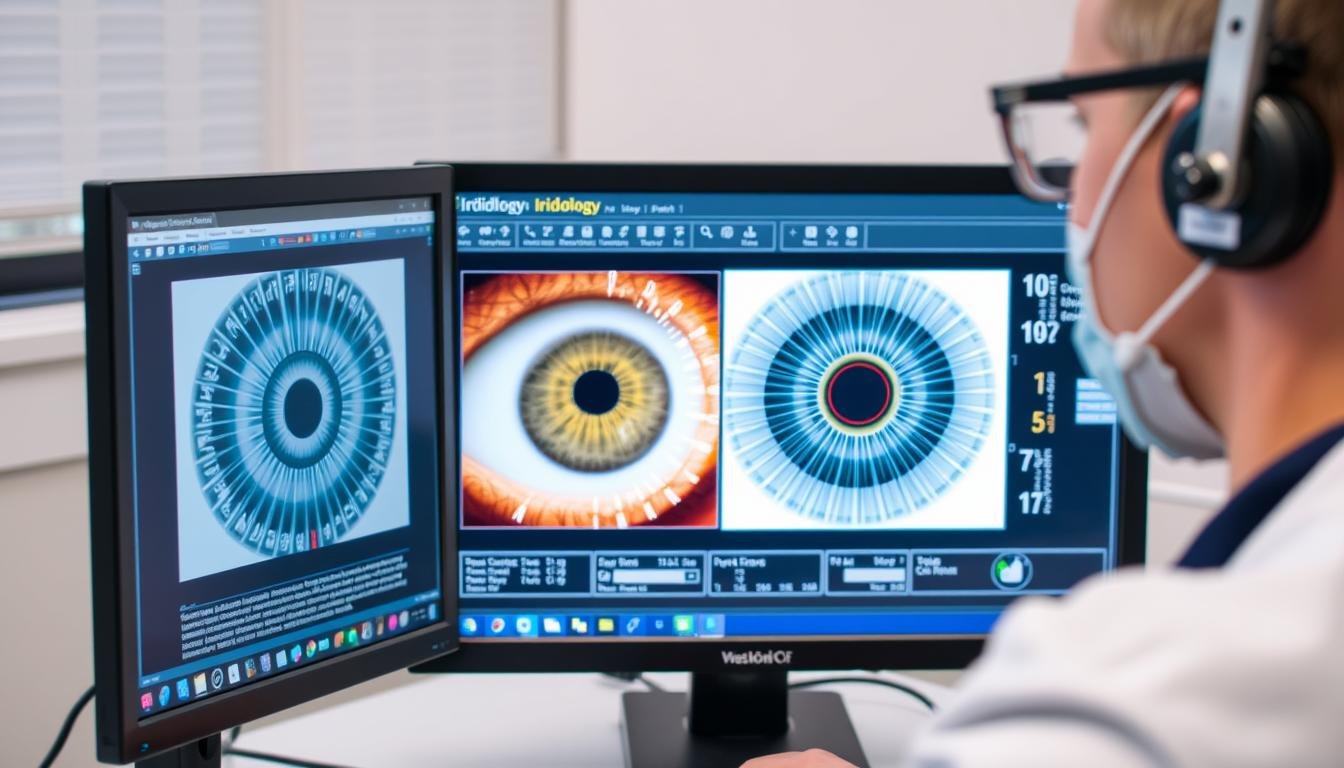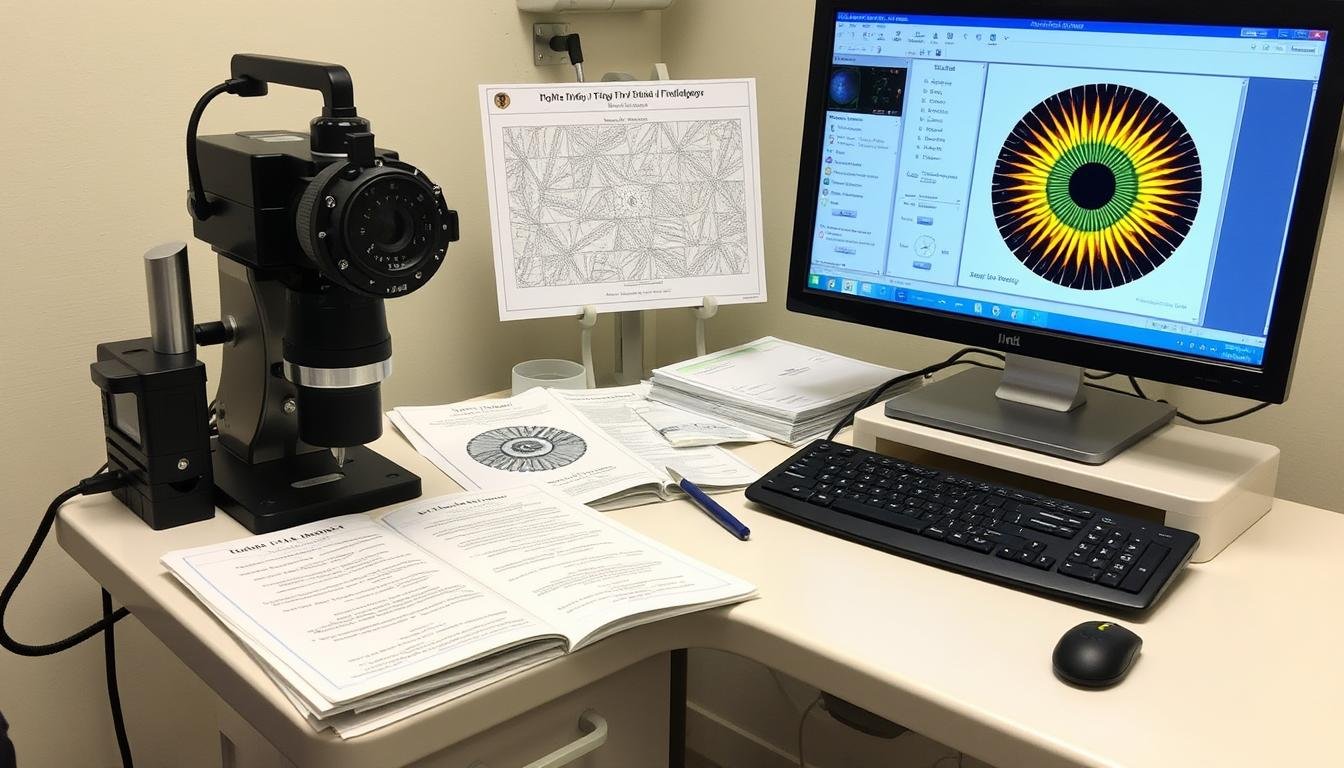Case Study 1: Tableau d'iridologie Analysis for Digestive Issues
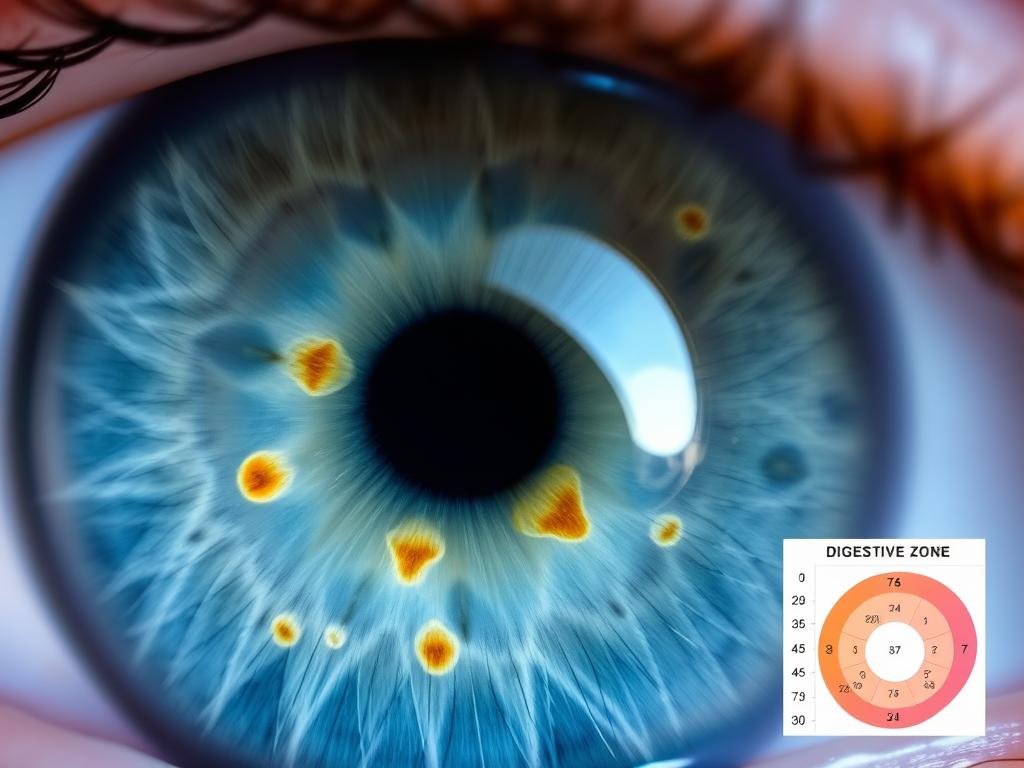
Iris photograph showing digestive system markers (stomach and intestinal zones)
Patient Background
A 42-year-old female presented with chronic digestive complaints including bloating, irregular bowel movements, and occasional acid reflux. Conventional testing had shown mild inflammation but no specific diagnosis.
Tableau d'iridologie Résultats
The patient’s iris showed distinct lacunae (small pit-like depressions) in the digestive zone between 6 and 7 o’clock in the right iris. According to the tableau d'iridologie, this area corresponds to the small intestine. Additional radial lines were observed in the stomach region, suggesting increased stress in this organ.
Interpretation and Outcome
Based on the tableau d'iridologie analysis, the practitioner suggested potential malabsorption issues and recommended further investigation of small intestinal bacterial overgrowth (SIBO). Subsequent medical testing confirmed mild SIBO, and appropriate dietary modifications and herbal supplements were recommended. The patient reported significant improvement in symptoms after three months of targeted intervention.
Need Professional Iridology Equipment?
Our professional-grade iriscopes and cameras capture the detailed iris images needed for accurate analysis. Used by practitioners worldwide.
Contact Us for Equipment Details
Case Study 2: Cardiovascular Health Assessment via Tableau d'iridologie
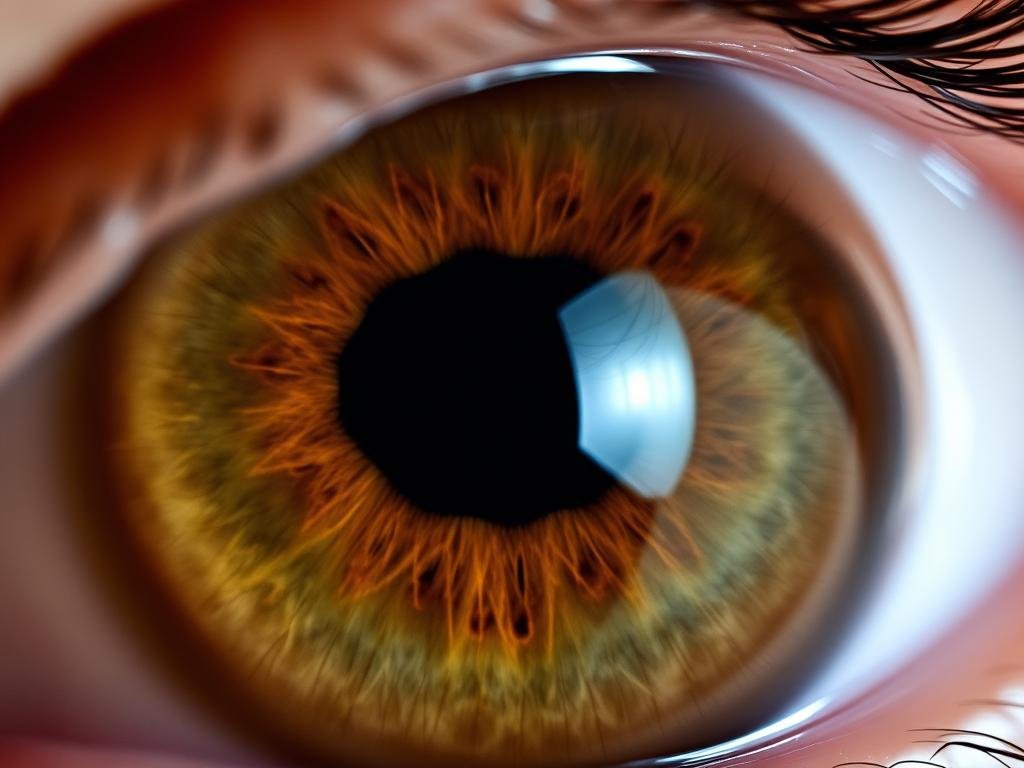
Iris photograph highlighting cardiovascular zone markers
Patient Background
A 58-year-old male with a family history of heart disease sought preventive health screening. He reported occasional shortness of breath during physical activity but had no diagnosed cardiovascular conditions.
Tableau d'iridologie Résultats
Examination revealed a prominent arcus senilis (white ring around the iris periphery) and several spoke-like markings in the heart region of the left iris. According to the tableau d'iridologie, these signs may indicate circulatory challenges and potential cholesterol imbalances.
Interpretation and Outcome
The iridologist suggested cardiovascular assessment based on these findings. Medical testing subsequently revealed moderately elevated cholesterol levels and mild hypertension. The patient began a heart-healthy diet, exercise program, and appropriate supplements. Six-month follow-up showed improved cardiovascular markers and reduced symptoms.
Case Study 3: Lymphatic System Analysis Using Tableau d'iridologie
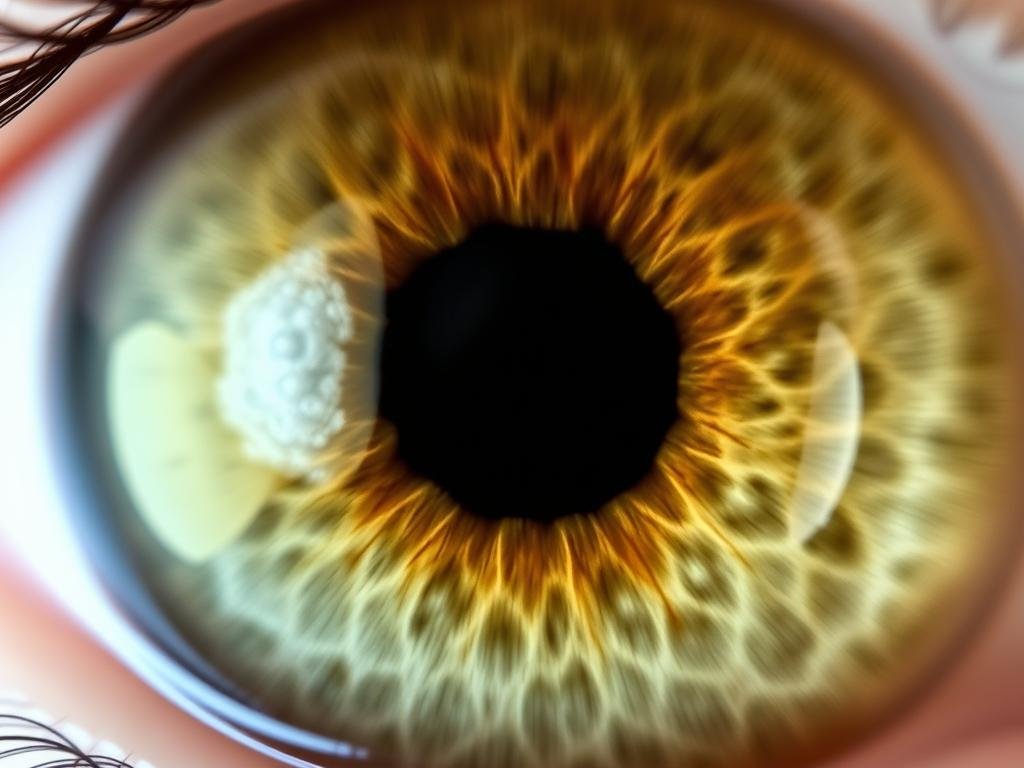
Iris showing lymphatic congestion patterns in relevant zones
Patient Background
A 35-year-old female complained of frequent minor infections, fatigue, and swollen lymph nodes. She had previously been diagnosed with allergies but continued to experience symptoms despite treatment.
Tableau d'iridologie Résultats
The iris examination revealed a lymphatic rosary (a ring of small white dots) in both irises, particularly pronounced in the left iris. According to the tableau d'iridologie, this pattern suggests lymphatic congestion and potential immune system stress.
Interpretation and Outcome
Based on the tableau d'iridologie analysis, the practitioner recommended lymphatic support through dry brushing, specific herbs, and increased hydration. After implementing these recommendations, the patient reported reduced frequency of infections and improved energy levels within two months.
Case Study 4: Hormonal Balance Evaluation Through Tableau d'iridologie

Iris showing endocrine system markers in relevant zones
Patient Background
A 39-year-old female experienced irregular menstrual cycles, mood fluctuations, and unexplained weight gain. Medical tests had shown borderline thyroid function but no definitive diagnosis.
Tableau d'iridologie Résultats
Iris analysis revealed notable markings in the endocrine zones of both irises. According to the tableau d'iridologie, there were specific lesions in the thyroid and adrenal regions, suggesting potential imbalances in these glandular systems.
Interpretation and Outcome
The iridologist recommended comprehensive hormonal testing, which confirmed subclinical hypothyroidism and adrenal fatigue. With appropriate nutritional support, stress management techniques, and medical monitoring, the patient experienced gradual normalization of hormonal function and symptom improvement.
Learn Professional Iridology Interpretation
Our advanced iridology software helps practitioners analyze iris patterns with precision. Includes comprehensive tableau d'iridologie references and analysis tools.
Request Software Information
Case Study 5: Nervous System Assessment via Tableau d'iridologie
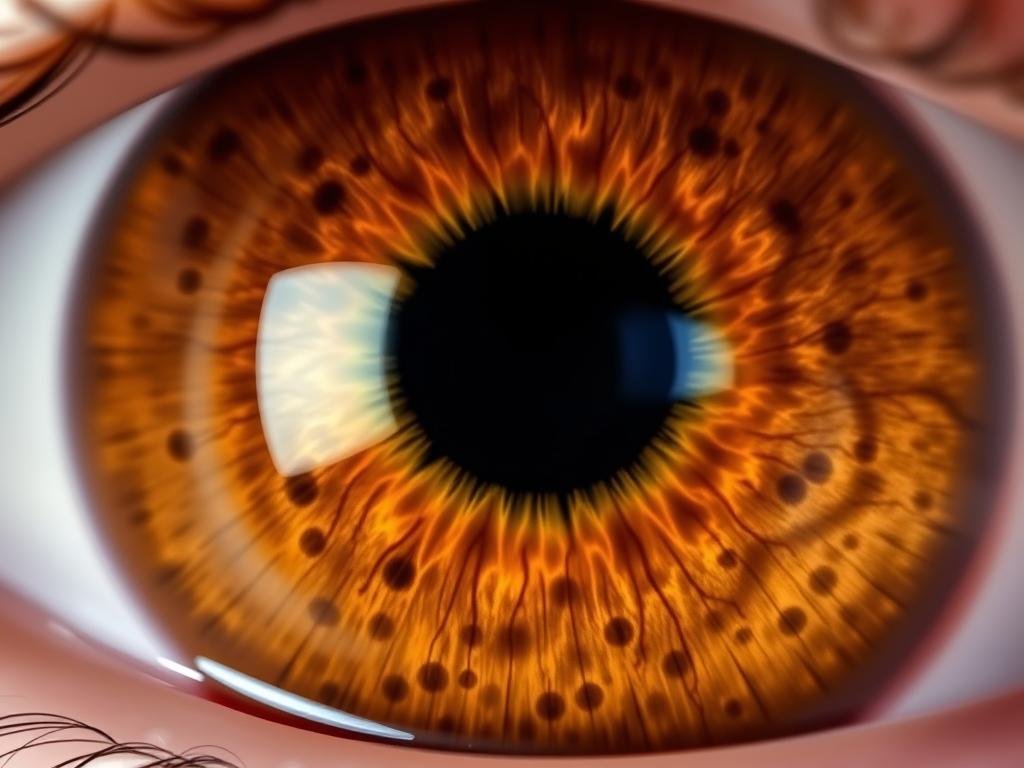
Iris showing nervous system stress patterns in brain and nerve zones
Patient Background
A 47-year-old male reported chronic headaches, sleep disturbances, and increasing anxiety. Neurological examinations had found no structural abnormalities, and he sought alternative perspectives.
Tableau d'iridologie Résultats
The iris examination revealed multiple stress rings (also called nerve rings) throughout both irises and specific markings in the brain region at the top of the iris. According to the tableau d'iridologie, these patterns suggest nervous system tension and potential mineral imbalances affecting neurological function.
Interpretation and Outcome
Based on the tableau d'iridologie analysis, the practitioner recommended magnesium supplementation, B-complex vitamins, and stress reduction techniques. The patient reported gradual improvement in headache frequency and sleep quality after implementing these recommendations consistently for three months.
Conclusion : la valeur de Tableau d'iridologie Analyse
The case studies presented demonstrate how tableau d'iridologie interpretation can provide valuable insights into various aspects of health and wellbeing. While iridology should not replace conventional medical diagnosis, it offers a complementary perspective that many practitioners find beneficial for identifying potential health imbalances and guiding preventive strategies.
The iris, with its complex patterns and markings, continues to fascinate health practitioners as a potential window into the body’s internal functioning. As technology advances, the tools for iris analysis become increasingly sophisticated, allowing for more detailed and precise tableau d'iridologie interpretation.

Professional consultation based on tableau d'iridologie analyse
Faites l’expérience d’une analyse d’iridologie professionnelle
Our team provides comprehensive tableau d'iridologie interpretation services and supplies professional-grade iridology equipment to practitioners worldwide. Whether you’re seeking personal health insights or professional tools for your practice, we offer customized solutions backed by decades of expertise.
ou
Contact Us for Personalized Consultation













